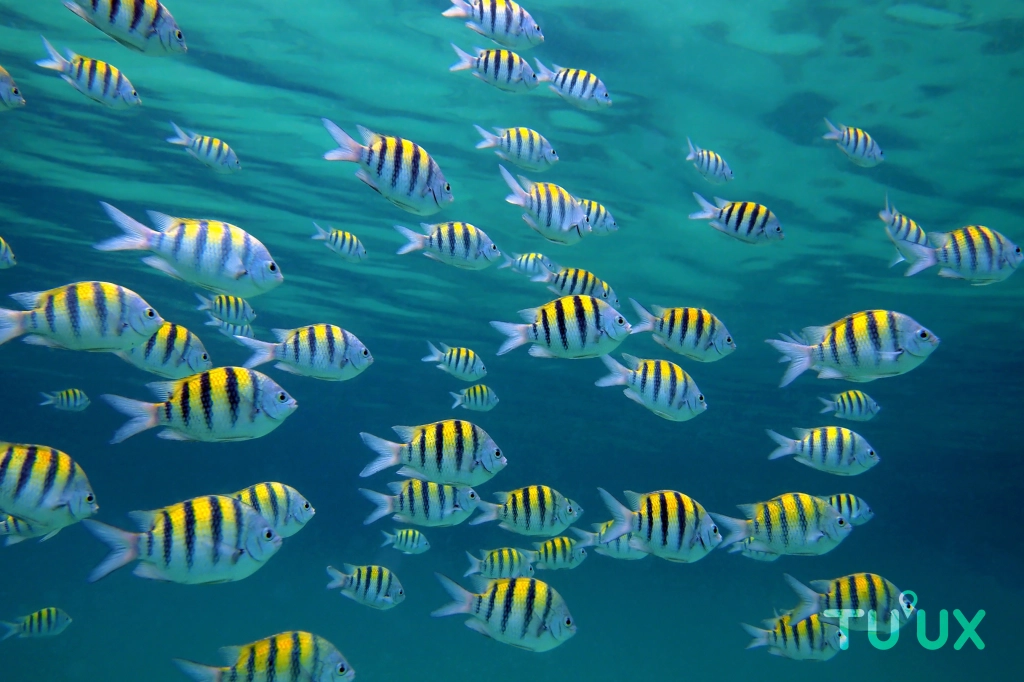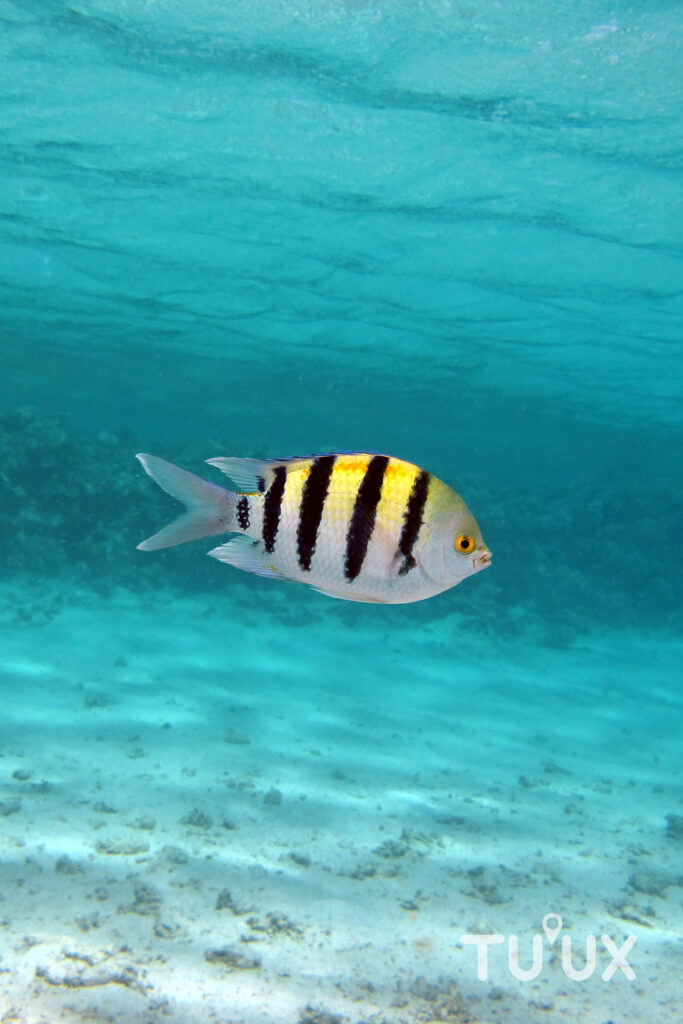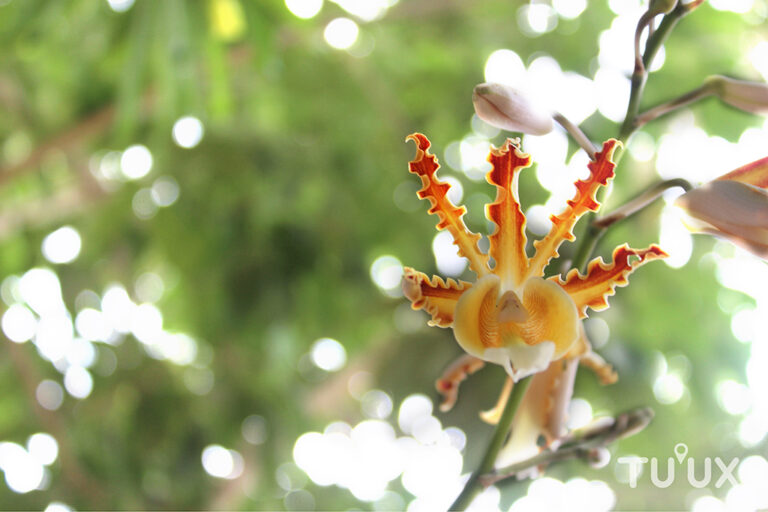EL SARGENTO MAYOR
🐠 Un Habitante Fascinante de los Océanos Tropicales
En los vibrantes arrecifes de coral del Caribe y el Atlántico tropical, un pequeño pez se roba las miradas con su elegante patrón de rayas y su energía inagotable. Se trata del Sargento Mayor (Abudefduf saxatilis), también conocido como píntano, un pez que combina belleza, comportamiento intrigante y un papel ecológico clave en los ecosistemas marinos donde habita.
🎨 Apariencia y Distribución
El Sargento Mayor pertenece a la familia de los pomacéntridos (damiselas), conocidos por su carácter territorial y sus brillantes colores. Este pez alcanza una longitud máxima de 22 cm y presenta un cuerpo ovalado y comprimido lateralmente, ideal para moverse entre corales y estructuras submarinas.
- Coloración característica: Exhibe cinco franjas negras verticales sobre un fondo que puede variar del amarillo intenso en juveniles a un azul plateado grisáceo en adultos, lo que le da un aspecto inconfundible.
- Amplia distribución: Habita en las aguas tropicales y subtropicales del océano Atlántico, desde las costas del este de Estados Unidos hasta Brasil, incluyendo el mar Caribe, el Golfo de México y África Occidental.
🏝️ Hábitat en Mahahual y el Caribe
En destinos como Mahahual, Quintana Roo, es común observar al Sargento Mayor nadando en grandes cardúmenes cerca de:
- Arrecifes de coral
- Zonas rocosas
- Muelles y naufragios
- Áreas poco profundas con buena visibilidad
Su presencia constante en las cristalinas aguas de Mahahual lo convierte en uno de los primeros peces que los visitantes identifican al hacer snorkel o buceo.
🔬 Comportamiento y Alimentación
Este pez es omnívoro y oportunista, lo que le permite adaptarse a una amplia variedad de fuentes de alimento:
- Se alimenta de algas, pequeños crustáceos, larvas y zooplancton.
- Durante la temporada de reproducción, los machos se vuelven altamente territoriales, defendiendo agresivamente el área donde construirán sus nidos.
- Exhiben un comportamiento social interesante, formando cardúmenes grandes y vistosos, que pueden incluir cientos de individuos, lo que también ayuda a disuadir a depredadores.
🐣 Reproducción y Cuidado Parental
La reproducción del Sargento Mayor es una de las más estudiadas entre peces de arrecife:
- Ovíparos: Las hembras depositan sus huevos en superficies duras, como rocas o corales.
- Machos protectores: Después de la fertilización, el macho se encarga de vigilar y ventilar los huevos, protegiéndolos hasta que eclosionan.
- Este comportamiento demuestra un alto grado de cuidado parental, poco común en muchas otras especies marinas.
🌍 Importancia Ecológica y Económica
A pesar de su pequeño tamaño, el Sargento Mayor cumple roles clave dentro del ecosistema:
- Contribuye al control de algas, ayudando a mantener el equilibrio en los arrecifes.
- Sirve como presa para peces más grandes, siendo un eslabón fundamental en la cadena alimentaria marina.
- Es popular en la acuariofilia marina por su colorido y resistencia, aunque esta demanda puede representar un riesgo si no se regula adecuadamente.
⚠️ Amenazas
- Degradación de hábitats: La pérdida de arrecifes de coral por el cambio climático y la contaminación afecta directamente su entorno natural.
- Captura excesiva: Su recolección indiscriminada para acuarios puede alterar las poblaciones locales.
🌊 Conclusión
El Sargento Mayor no solo deslumbra por su colorido y elegancia, sino que también desempeña un papel esencial en la salud de los arrecifes tropicales. Observarlo en libertad, nadando entre corales en lugares como Mahahual, es una experiencia que nos conecta con la riqueza natural de nuestros océanos.
Proteger al Abudefduf saxatilis y su hábitat es preservar la belleza, equilibrio y biodiversidad del mar para las futuras generaciones. Cada pez cuenta, y este en particular, nos recuerda lo vibrante y frágil que puede ser la vida bajo las olas.


🐠 The Sergeant Major: A Fascinating Inhabitant of Tropical Ocean
In the vibrant coral reefs of the Caribbean and the tropical Atlantic, a small fish catches the eye with its striking striped pattern and tireless energy. Meet the Sergeant Major (Abudefduf saxatilis), also known in some regions as the píntano—a fish that combines beauty, intriguing behavior, and a key ecological role in the marine environments it inhabits.
🎨 Appearance and Distribution
The Sergeant Major belongs to the Pomacentridae family (damselfishes), known for their territorial behavior and bright colors. This species grows up to 22 cm in length and has a laterally compressed, oval-shaped body perfect for weaving through coral formations and submerged structures.
- Distinctive coloration: It displays five black vertical bars over a background that ranges from bright yellow in juveniles to silvery-blue or gray in adults, giving it a unique and unmistakable appearance.
- Wide distribution: It inhabits tropical and subtropical waters of the Atlantic Ocean, from the eastern coast of the United States to Brazil, including the Caribbean Sea, Gulf of Mexico, and West Africa.
🏝️ Habitat in Mahahual and the Caribbean
In places like Mahahual, Quintana Roo, the Sergeant Major is a familiar sight swimming in large schools near:
- Coral reefs
- Rocky areas
- Piers and shipwrecks
- Shallow, crystal-clear waters
Its constant presence in Mahahual’s vibrant waters makes it one of the first fish visitors recognize while snorkeling or diving.
🔬 Behavior and Diet
This fish is an omnivorous opportunist, which allows it to thrive in a variety of environments:
- Feeds on algae, small crustaceans, larvae, and zooplankton.
- During breeding season, males become highly territorial, aggressively defending nesting sites.
- Known for its social behavior, the Sergeant Major often forms large, conspicuous schools—sometimes hundreds of individuals—which also helps deter predators.
🐣 Reproduction and Parental Care
The Sergeant Major’s reproductive strategy is both fascinating and effective:
- Oviparous: Females lay adhesive eggs on hard surfaces like rocks or coral.
- Male guardianship: After fertilization, the male guards and aerates the eggs, protecting them until they hatch.
- This demonstrates a high level of parental care, uncommon among many other marine species.
🌍 Ecological and Economic Importance
Despite its small size, the Sergeant Major plays important roles in coral reef ecosystems:
- Contributes to algae control, helping maintain reef health.
- Serves as prey for larger marine species, being a vital link in the food chain.
- A favorite in marine aquariums due to its resilience and attractive appearance—though this also presents conservation concerns if not properly regulated.
⚠️ Threats
- Habitat degradation: Coral reef loss due to climate change and pollution directly affects its natural habitat.
- Overcollection: High demand for aquarium specimens can impact wild populations if not sustainably managed.
🌊 Conclusion
The Sergeant Major is more than just a beautiful fish—it is an essential component of tropical marine biodiversity. Watching it swim freely among the coral formations of Mahahual is a vivid reminder of the richness and fragility of our oceans.
Protecting Abudefduf saxatilis and its habitat means preserving the balance, beauty, and biodiversity of our seas for future generations. Every species matters, and this one, in particular, shows us how vibrant and delicate life beneath the waves can be.
Want to discover more marine species of the Mexican Caribbean?
Explore our blog and dive into a world of colors, shapes, and fascinating behaviors.
Would you like tags for SEO or a short meta description in English as well?







